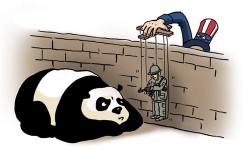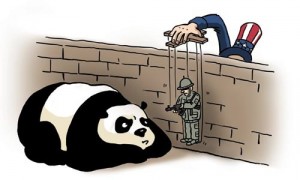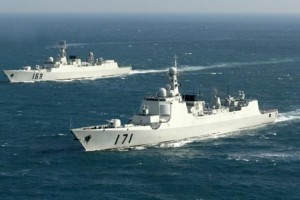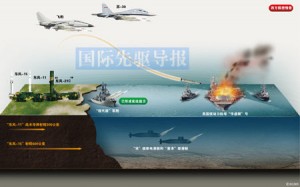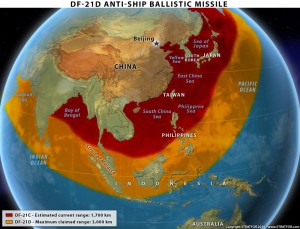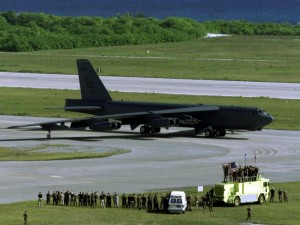
In 2016 America’s 50-year lease on the island of Diego Garcia expires. Under the current terms of the agreement, the option to extend leasing rights for a further 20 years must be agreed upon by both the U.S. and Diego Garcia’s owner, Britain, no later than December 2014. On June 8th, likely spurred on by the looming deadline, the prime ministers of both Britain and Mauritius met to discuss the future of the island. At issue is the question of sovereignty.
Mauritius, located 1200 miles to Diego Garcia’s southwest, is typically grouped into African international associations and has only tenuous connections with Diego Garcia’s Chagos Archipelago. Prior colonial rulers Britain and France at various times lumped the island chains together administratively. Once it became a self-governing colony in 1959, Mauritius retained control of the Chagos archipelago until it sold the islands back to Britain in 1965, the same year Mauritius voted for complete independence. Britain then proceeded to depopulate the newly formed British Indian Ocean Territory, sending (both voluntarily and not) the approximately 2,000 inhabitants to the Seychelles and Mauritius, to make room for an American military build-up.
Now, it appears there is a good chance Britain may transfer sovereignty back to Mauritius to extract itself from the fallout of forthcoming legal rulings. Originally I wasn’t going to post on this situation because, while interesting, I didn’t feel the saga was likely to change much of the Asia-Pacific’s strategic make-up. However, a couple widely read maritime blogs and a National Review Online article have sounded alarms over fears raised by The Guardian‘s coverage of the topic. Namely, the assumption that if the British give up their sovereignty the Americans will lose their ability to use the base for strategic Pacific purposes (no irony intended).
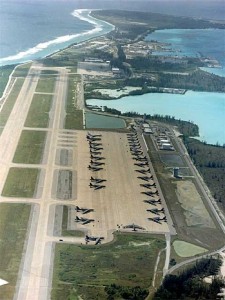
This fear is misplaced for a couple of reasons. First, Mauritian Prime Minister Navinchandra Ramgoolam has taken pains to assure Washington that while “The objective of 2014 is to reassert sovereignty,” there is “without question” a need for the West to maintain a base on Diego Garcia. And there’s reason to believe him. There’s little other economically profitable activity the island and surrounding waters can sustain. In all cynical likelihood, the great interest Mauritius has taken in “regaining” control of Diego Garcia is precisely to be the recipient of American rent for its operations there.
Second, setting aside the moral issues stemming from the deportations, upcoming legal rulings at the U.N. and E.U. Court of Human Rights might force Britain’s hand if it holds on to the islands (although the matter of enforcing the ruling might leave its effects in limbo). If Mauritius gains control over the archipelago, a ruling in favor of the Chagossians could be mitigated by the powers Mauritius exerts over its own citizens, forcing them to accept additional compensation in exchange for perhaps occasional visits, or a token designated area of inhabitation.

Third, strengthening ties with Mauritius fits in to the strategic architecture not only in the Asia-Pacific, but also for the western Indian Ocean and Africa. As a democracy with a strong Western tilt and Indian ties, Mauritius represents a stable base from which to make inroads into critical areas along maritime trade routes. In a further act of signaling to reassure, Prime Minister Navichandra took the opportunity of visiting Downing Street to also sign an anti-piracy agreement with the U.K., opening up Mauritius as a destination for the prosecution and jailing of pirates. For its part, the U.S. has good relations with the country and helps to train its military in counter-terror and other missions.
In some regards the Cassandras of the Chagos are right to worry about the outcome. It’s hard to imagine a more ideal military outpost and waypoint than the current setup at DG: no neighbors to complain about the noise or pry into operations, cheap pay for imported labor, excellent diving (if you don’t mind the sharks). The only real drawback is perhaps its slightly too-distant location from hot spots in Southeast and Northeast Asia, but it can’t be everywhere at once. If Mauritius does come into ownership, the U.S. may pay more for its continued use of the basing, pay more for labor and have to hire former islanders or their descendents, and put up with a few inhabitants and the complications that they bring. All in all, however, such changes would be mostly superficial.
Yes, Mauritius could always change its mind on basing rights in the future. But there’s not yet cause for alarm.
LT Scott Cheney-Peters is a surface warfare officer and the former editor of Surface Warfare magazine. The opinions and views expressed in this post are his alone and are presented in his personal capacity. They do not necessarily represent the views of U.S. Department of Defense or the U.S. Navy.




